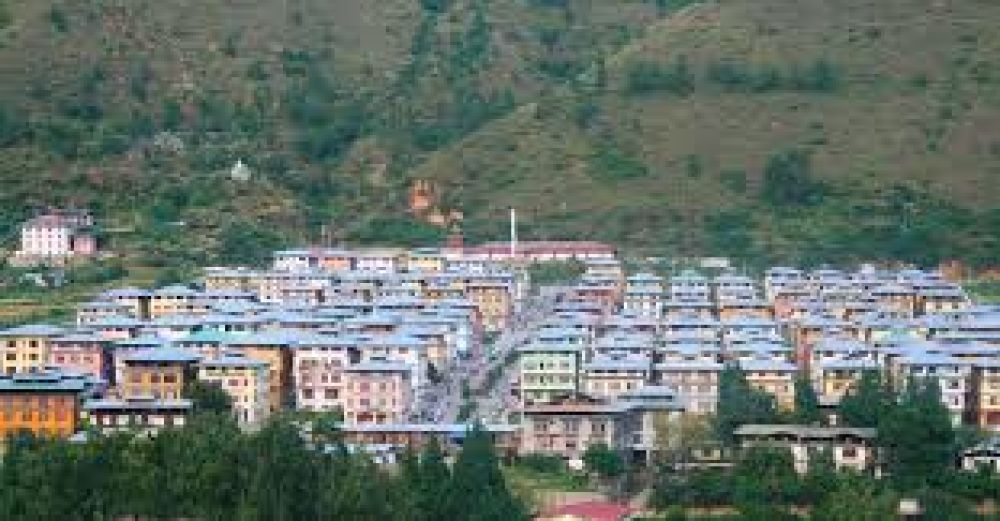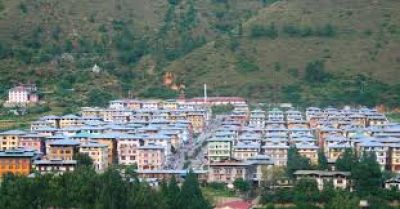

The grand Wangdue Phodrang Dzong is an iconic fortress that sits atop a hill at the confluence of the Punakha Chu and Tang Chu rivers. Built in the 17th century, this dzong is a fine example of Bhutanese architectural ingenuity with its massive walls and beautifully structured courtyards. Visitors can explore the various chapels and assembly halls within the dzong, witnessing the intricate wall paintings and rich history that speak volumes of the Bhutanese culture. The dzong also offers panoramic views of the surrounding valleys and landscapes. Historically, it has played a key role in unifying the country and now serves as an administrative and monastic center for the region.
Rinchengang is an ancient village in Wangdue Phodrang known for its unique cluster of traditional Bhutanese mud houses and its proximity to the Wangdue Phodrang Dzong. Participating in a hike to this picturesque village not only offers a glimpse into the traditional lifestyle of the Bhutanese people but also provides visitors with the opportunity to interact with local artisans. The village is famous for its skilled stonemasons who have contributed to the construction of many Dzongs across Bhutan. The hike itself is quite tranquil and reveals breathtaking views of the surrounding rice fields and the formidable Dzong in the distance.
Phobjikha Valley, a picturesque glacial valley near Wangdue Phodrang, is renowned for its scenic landscapes and as the winter home of the rare and beautiful Black-necked Cranes. Bird watching enthusiasts will love the serene experience of observing these elegant birds, among other species, in their natural habitat. The best time to visit is from late October to February when the cranes roost in the valley. The valley also has several nature trails and a Crane Information Center that offers insights into the cranes and valley's ecology. This activity provides an exceptional opportunity to marvel at pristine nature while promoting bird conservation efforts.
Gangtey Monastery, residing in the Phobjikha Valley, is an important religious center for Nyingmapa school of Buddhism. The monastery dates back to the 17th century and is home to a rich tapestry of history and spiritual practices. Visitors often take guided tours to learn about the spiritual significance of the monastery, its role in the community, and to admire its religious artifacts and architecture. The monastery also provides breathtaking views of the valley below, making it not just a spiritual visit but also a scenic one. Touring the Monastery, you'll feel a sense of peace and timelessness that envelops this sacred space.
The Gangtey Nature Trail offers one of the most scenic treks in Bhutan, showcasing the stunning Phobjikha Valley. The trail takes trekkers through forests, across meadows, past village homes, and often offers encounters with local wildlife. The trek generally begins at Gangtey Monastery and ends in the wetlands where the Black-necked Cranes can be observed. Suitable for both novice and experienced trekkers, the trail's relatively gentle slopes make it accessible while still providing a fulfilling outdoor experience. Along with the natural beauty, trekkers can experience the cultural richness of the valley and its communities.
Archery is the national sport of Bhutan, and no visit to Bajo Town would be complete without trying your hand at this cherished cultural activity. Visitors can go to local archery ranges to watch traditional matches or participate in an archery experience where they can learn the basics of Bhutanese archery. This activity is not only sport but also an insight into Bhutanese culture, with traditional songs and dances often accompanying competitions. The experience allows for bonding over shared respect for the sport and provides fun, laughter, and potential for new friendships along with the thrills of hitting (or missing) the target.
Although slightly outside of Wangdue Phodrang, the traditional Bhutanese hot stone bath experience in nearby Punakha is a must-try activity. It's a therapeutic and culturally enriching experience that has been practiced in Bhutan for centuries. River stones are heated until red and then immersed in water to release minerals and warmth. The hot stone bath is believed to have healing properties for various ailments. Visitors can enjoy this relaxation technique, often offered in a rustic and natural setting, as part of a wider wellness and rejuvenation process that not only soothes the body but also provides a spiritual lift.
Mesina Village is known for its pottery, where visitors can engage in hands-on experiences, learning from the local experts who have preserved the craft for generations. Pottery making in Bhutan is a traditional art that reflects the country's cultural heritage. Guests can spend time at the potter's wheel shaping clay sourced from the local area, creating their own works under the guidance of skilled artisans. This activity not only allows travelers to learn a new skill but also to participate in the preservation of local art forms and understand the lifestyle of the villagers who produce these traditional Bhutanese crafts.
The Sha Radap Ecological Park, located in Wangdue Phodrang district, is a nature reserve dedicated to the conservation of Bhutan's rich biodiversity. Visitors can enjoy serene walks through the park's trails, which feature a plethora of flora and fauna native to Bhutan. The park serves as an educational hub for understanding local ecosystems and the importance of environmental preservation. It features botanical gardens, eco-friendly picnic areas, and opportunities for bird watching. Educational tours are often available, detailing efforts in conservation and sustainable practices within the ecosystem. The park is ideal for families and nature enthusiasts.
Bhutanese cuisine is a delightful experience for the gastronomically adventurous. In Bajo Town and surrounding areas, culinary tours offer a taste of the local flavors with dishes that emphasize fresh, organic ingredients. A cooking class complements this cultural encounter, as visitors learn how to prepare traditional dishes like Ema Datshi (chili and cheese), Phaksha Paa (pork with red chilies), and red rice. These classes are both educational and hands-on, typically culminating in a meal where participants can savor the fruits of their labor. This activity provides a deeper insight into the Bhutanese way of life through its food traditions.
